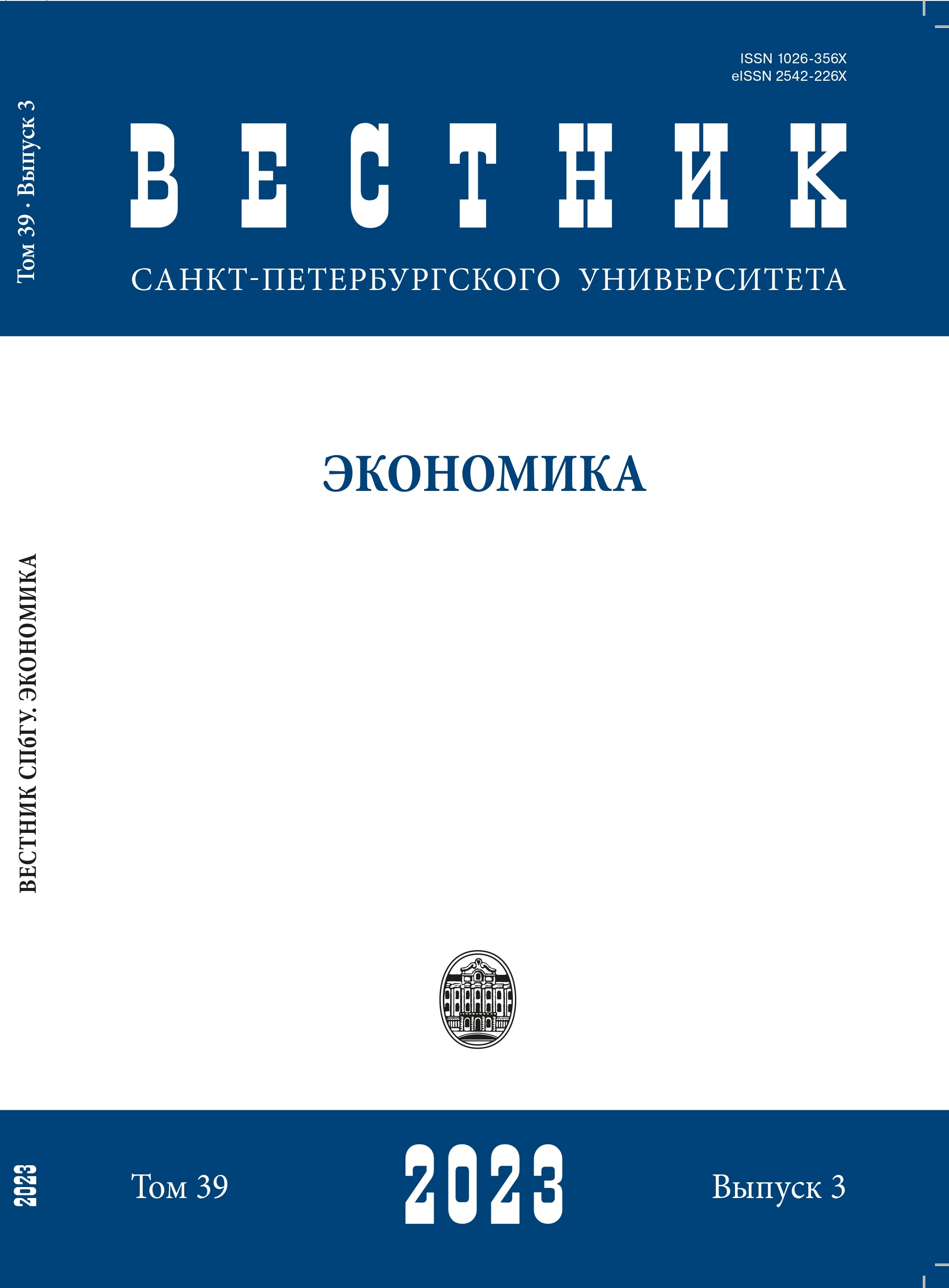Economic aspects of state support of Russian steel industry enterprises in the conditions of external shocks
DOI:
https://doi.org/10.21638/spbu05.2023.304Abstract
The metallurgical sector of Russia has been a recipient of state support at the federal and regional levels for many years. The sector receives subsidies from more than 90 programs and indirectly benefits from pricing policies for electricity, natural gas and rail transport. However, the analysis of measures to support the sector under the conditions of Western sanctions and the coronavirus pandemic is of particular relevance. The aim of the work is to determine the role of state support for steel producers in the face of external shocks — the coronavirus pandemic and Western sanctions. The working hypothesis of the study is the assertion that direct and indirect measures related to supporting the sector in the face of sanctions and the negative consequences of coronavirus contribute to reducing the adaptation costs of producers,
as well as increasing their competitiveness. The stated goal and the indicated hypothesis determine the structure of the paper. Thus, the author examines the theoretical and practical aspects of the impact of sanctions on the national economy, the Russian steel market, state policy towards the steel industry, as well as direct and indirect measures of state assistance that affect the steel production sector. The research methodology is based on a comprehensive review of indirect and direct mechanisms of state support for the industry. The study resulted in the identification of channels of state influence on the steel market in the context of the COVID-19 pandemic and sanctions. The results of the study can be used in the formation of
the Russian industrial policy.
Keywords:
economic sanctions, COVID-19, steel industry, Russian business, Russian Federation
Downloads
References
Amuzegar, J. (1997) ‘Adjusting to Sanctions’, Foreign Affairs, 76 (3), pp. 31–41.
Biglaiser, G. and Lektzian, D. (2011) ‘The Effect of Sanctions on US Foreign Direct Investment’, International Organization, 65 (3), pp. 531–51.
EIU. (2023) Commodities outlook. Available at: https://www.eiu.com/n/campaigns/commoditiesoutlook2023/utm_source=google&utm_medium=paidsearch&utm_campaign=commodities outlook2023&gclid=Cj0KCQiApKagBhC1ARIsAFc7Mc6Sba8lN0vW8c86fTnZz7rQ95dhCKgtxtace_5lSCjQDOADwMNh0R8aApUBEALw_wcB (accessed: 13.06.2023).
European Comission. (2020) EU’s 2020 Report on significant distortions in the economy of the Russian Federation for the purposes of trade defence investigations. Available at: https://trade.ec.europa.eu/doclib/docs/2020/october/tradoc_158997.pdf (accessed: 13.06.2023).
Gharehgozli, O. (2017) ‘An Estimation of the Economic Cost of Recent Sanctions on Iran Using the Synthetic Control Method’, Economics Letters, 157, pp. 141 44.
Gurvich, E. and Prilepskiy, I. (2015) ‘The Impact of financial sanctions on the Russian economy’, Russian Journal of Economics, 1, pp. 359–385.
Knobel, A. Y., Bagdasaryan, K. M., Loshchenkova, A. N. and Proka, K. A. (2019) Sanctions: seriously and for a long time. Moscow: Delo Publ. (In Russian)
Kudrin, A. L., Mau, V. A., Radygin, A. D. and Sinelnikov-Murylev, S. G. (2021) Russian economy in 2021. Trends and prospects. Moscow: Publishing House of the Institute of Gaidar. (In Russian)
Lektzian, D. and Biglaiser, G. (2013) ‘Investment, Opportunity, and Risk: Do US Sanctions Deter or Encourage Global Investment?’ International Studies Quarterly, 57 (1), pp. 65–78.
Loshchenkova, A. N. and Zaitsev, Y. K. (2019) ‘The impact of the ruble exchange rate dynamics on the inflow of foreign investment into the Russian economy’, Journal of the New Economic Association, 4 (44),pp. 127–142. (In Russian)
OECD. (2022) Steel Market Developments. Q4 2022. Available at: https://www.oecd.org/industry/ind/steelmarket-developments-Q4-2022.pdf (accessed: 13.06.2023).
Park, J. S. (2014) ‘The Key to the North Korean Targeted Sanctions Puzzle’, The Washington Quarterly,37 (3), pp. 199–214.
Shin, G., Choi, S. and Luo, S. (2015) ‘Do Economic Sanctions Impair Target Economies?’, International Political Science Review, 37 (4), pp. 485–99.
Watanabe, S. (1987) ‘Technological Capability and Industrialization: Effects of Aid and Sanctions in the United Republic of Tanzania and Zimbabve’, International Labour Review, 126 (5), pp. 525–541.
WSA. (2022) Worldsteel Short Range Outlook April 2022. Available at: https://worldsteel.org/media-centre/ press-releases/2022/worldsteel-short-range outlook-april-2022/ (accessed: 23.04.2023).
Yang, J., Hossein, A., John, F. and Hildy, T. (2004) ‘US Economic Sanctions against China: Who Gets Hurt?’,World Economy, 27 (7), pp. 1047–1081.
Zaytsev, Y. (2016) ‘Diagnostics of foreign direct investments inflow in Russian Federation: theoretical and practical issues’, International Journal of Trade and Global Markets, 9 (2), pp. 170–181.
Downloads
Published
How to Cite
Issue
Section
License
Articles of the St Petersburg University Journal of Economic Studies are open access distributed under the terms of the License Agreement with Saint Petersburg State University, which permits to the authors unrestricted distribution and self-archiving free of charge.







